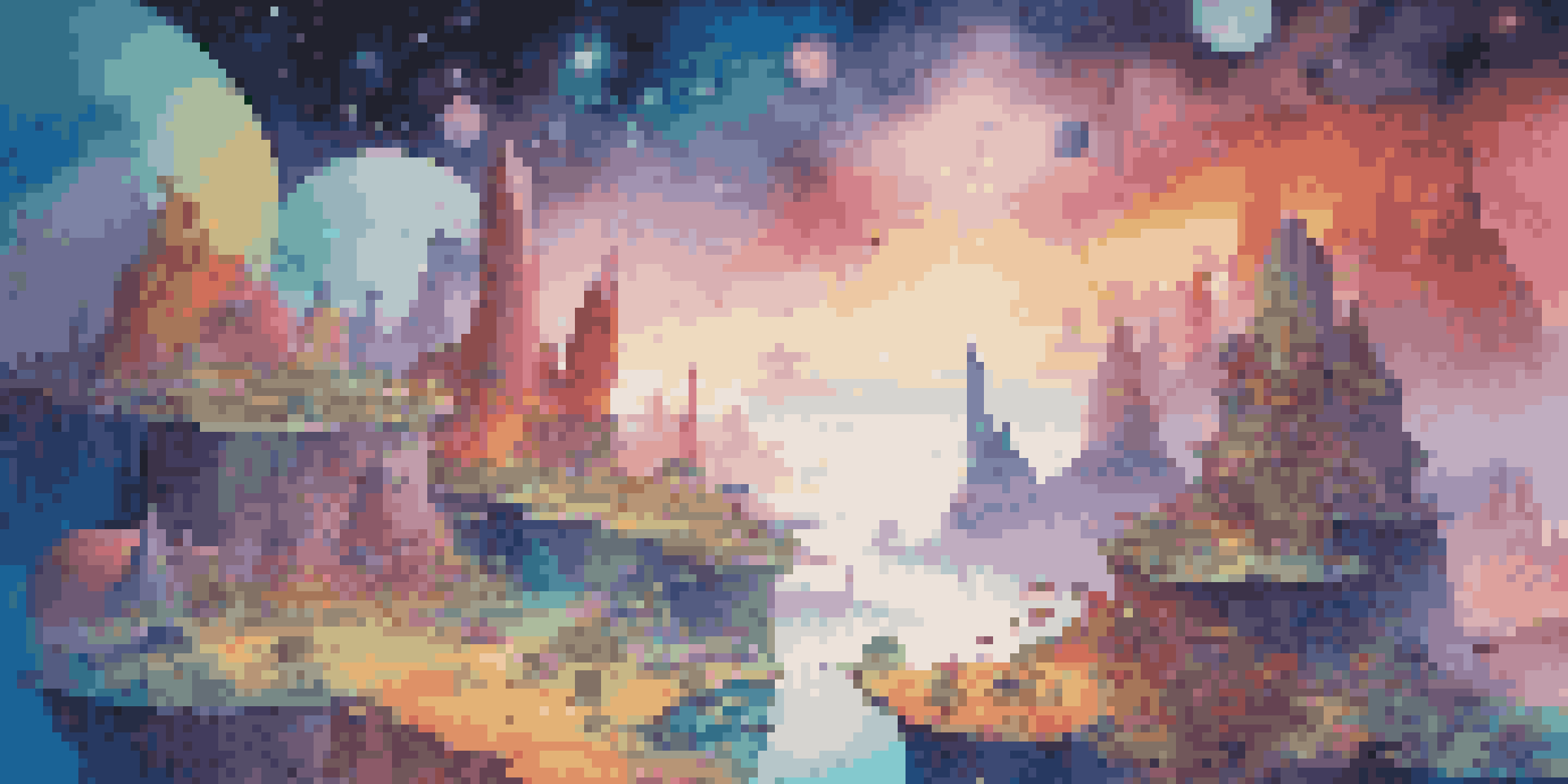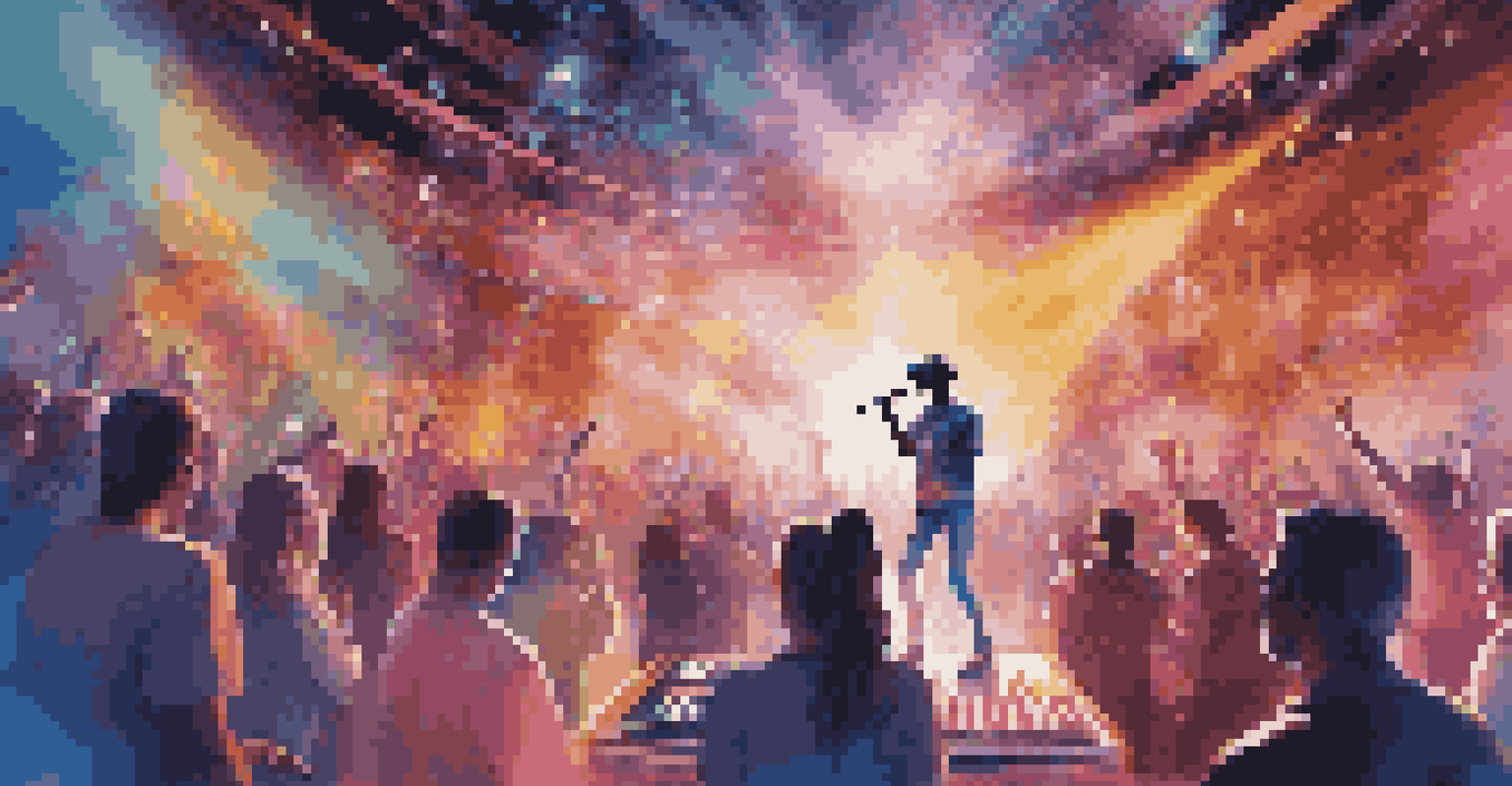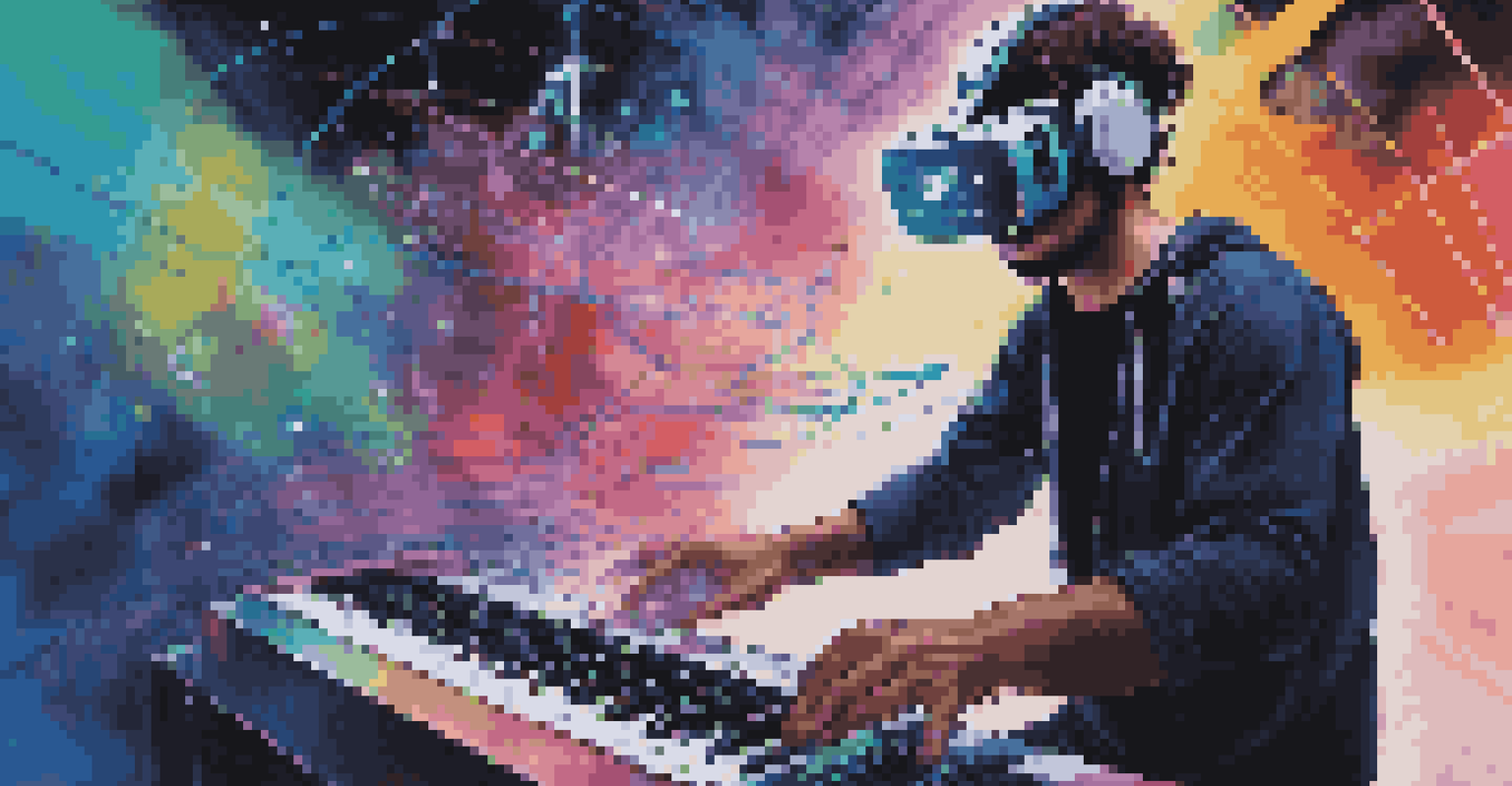The Interaction Between Music and Virtual Reality Art Forms

Understanding Virtual Reality and Its Artistic Potential
Virtual reality (VR) is an immersive technology that allows users to experience a simulated environment. This technology has evolved dramatically, enabling artists to create vibrant, interactive worlds that engage the senses. In the realm of art, VR provides a platform for storytelling, allowing creators to transport audiences into their imaginative landscapes.
Virtual reality is not just a new medium; it is a new way of experiencing art.
Artists are leveraging VR to explore new dimensions, both literally and figuratively. By combining visual elements with interactive components, they can evoke emotions and provoke thoughts in ways traditional mediums cannot. This fusion of technology and creativity opens up endless possibilities for artistic expression.
As VR continues to grow, understanding its artistic potential becomes crucial for artists and audiences alike. It challenges our perceptions of reality and encourages us to rethink how we consume and interact with art, making it a vital part of contemporary artistic discourse.
The Role of Music in Enhancing VR Experiences
Music plays a pivotal role in shaping the emotional landscape of any virtual experience. It adds depth and dimension, transforming a simple visual environment into a rich, immersive adventure. Just as a film score can enhance a movie's narrative, music in VR elevates the storytelling, guiding users through their journey.

In VR, the integration of sound can be dynamic and adaptive, responding to user actions and movements. This interactivity creates a more personalized experience, allowing users to feel more connected to the environment. Additionally, the spatial audio in VR can mimic real-life soundscapes, making the experience even more engaging.
VR Transforms Artistic Expression
Virtual reality enables artists to create immersive, interactive worlds that enhance storytelling and emotional engagement.
By harmonizing music with visual elements, creators can evoke specific feelings and reactions from users. This synergy not only enhances immersion but also fosters a deeper connection between the audience and the artwork, turning passive observers into active participants.
Creating Immersive Experiences Through Collaboration
Collaboration between musicians and VR artists is becoming increasingly common. By working together, they can craft experiences that blend sound with visuals seamlessly. This partnership often leads to innovative projects that push the boundaries of both art forms.
Music can be a bridge to the imagination, allowing us to explore realms we never thought possible.
For example, a musician might compose a score that responds to the movements of a VR user, creating a unique audio-visual symphony. This type of collaboration encourages experimentation, enabling artists to explore new creative territories. The result is a multi-dimensional experience that captivates audiences.
Such collaborations not only enrich the artistic output but also foster community among creators. By sharing ideas and techniques, they can inspire each other to think outside the box and develop groundbreaking projects that redefine the landscape of both music and VR.
Case Studies: Successful Music-VR Projects
Several projects illustrate the successful fusion of music and VR, showcasing the potential of this combination. One notable example is 'The Night Cafe,' a VR experience inspired by Vincent van Gogh's art, where a haunting score enhances the immersive feel of walking through the painter’s world. This project exemplifies how music can evoke the emotional weight of visual art.
Another fascinating case is 'Wave,' a virtual concert platform that allows artists to perform in real-time for a global audience. The platform combines stunning visuals with live music, creating an experience that feels both intimate and expansive. This innovative approach has redefined how we perceive live performances, making them more accessible.
Music Enhances VR Immersion
The integration of music in VR experiences deepens emotional connections and transforms how audiences interact with art.
These case studies highlight the power of combining music and VR to create unforgettable experiences. As technology evolves, we can expect more artists to experiment with this dynamic fusion, pushing the boundaries of creativity even further.
The Impact of Technology on Music Creation in VR
Technology has significantly changed how music is created, especially in the context of VR. Software and tools specifically designed for VR environments allow musicians to craft soundscapes that are spatially aware and interactive. This technological advancement opens up new avenues for creativity and experimentation in music composition.
For instance, musicians can use VR to visualize sound waves and manipulate them in real-time, providing a unique perspective on their work. This immersive approach not only enhances the creative process but also helps artists understand how their music interacts with the visual elements of the VR environment.
As technology continues to advance, it will undoubtedly influence the future of music creation in VR. Artists will have the tools to explore uncharted territories, allowing for innovative compositions that resonate on multiple sensory levels.
Challenges in Merging Music and VR Art Forms
While the fusion of music and VR offers exciting opportunities, it also presents challenges. One major hurdle is the technical complexity involved in creating cohesive experiences. Artists must balance sound and visuals seamlessly, which can be a daunting task, especially for those new to the medium.
Another challenge lies in accessibility. Not all audiences have access to VR devices, which can limit the reach of these innovative projects. This creates a divide between those who can experience the art and those who cannot, potentially stifling the growth of this artistic form.
Collaborative Innovation in VR Art
Collaboration between musicians and VR artists fosters creativity, leading to unique projects that redefine art and performance.
Despite these challenges, artists are finding ways to overcome obstacles, experimenting with alternative delivery methods and platforms. By continuing to innovate and adapt, they can ensure that the magic of music and VR remains accessible and captivating for all.
The Future of Music and VR Art Forms
As we look ahead, the future of music and VR art forms appears bright. With advancements in technology, we can expect even more immersive and interactive experiences that blur the lines between the two disciplines. This evolution will likely lead to new genres and styles, expanding the possibilities for creative expression.
Moreover, as VR becomes more mainstream, more artists will explore this medium, bringing fresh perspectives and ideas to the table. This influx of creativity can inspire collaborations and innovations that redefine our understanding of both music and art.

Ultimately, the interaction between music and VR art forms is just beginning. As artists continue to push boundaries and explore new territories, audiences will have the opportunity to engage with art in ways previously thought impossible, making the future an exciting landscape to watch.